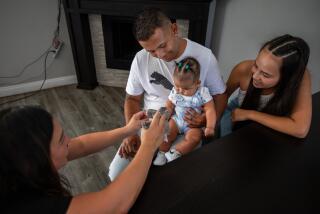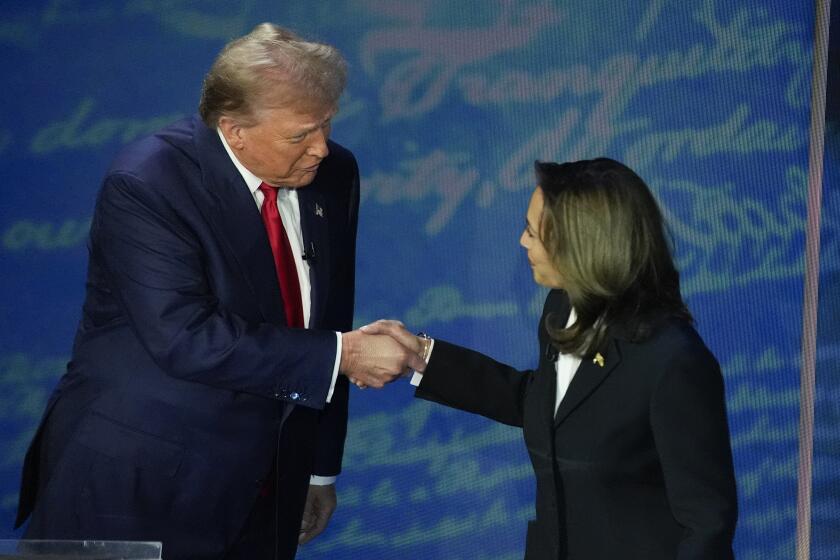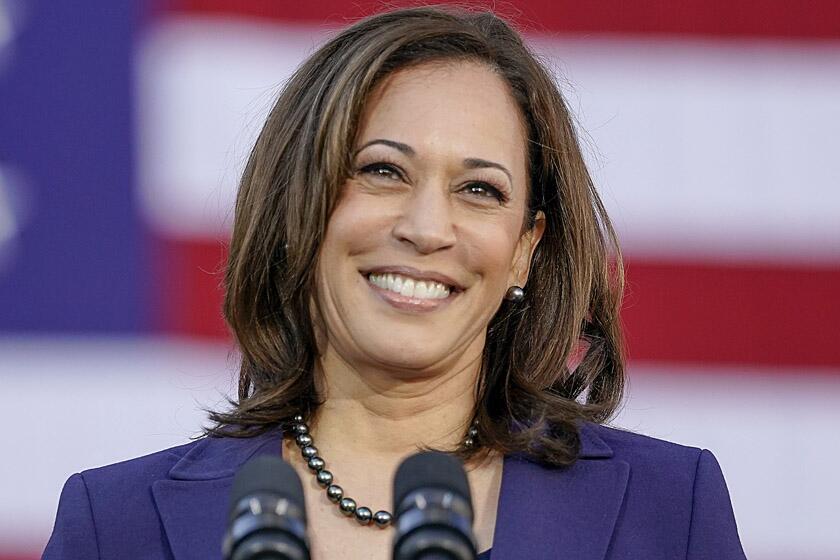When it comes to voting, we’re creatures of habit
The law requiring California officials to shuffle the order of names on statewide ballots might seem like a willful attempt to make this 135-candidate recall election more complex and bizarre than it already is.
In fact, psychologists say, the policy is an effective way to offset a well-known and potentially outcome-affecting oddity of behavior: When people choose from a list of options, they have a tendency to simply pick the first item on the list, whatever or whomever it may be.
“We have documented this effect in many elections, big and small, over many years and in controlled studies,” said Jon Krosnick, an Ohio State University psychologist who will soon be joining the faculty at Stanford University.
Many voters show up at polling stations purely out of civic duty, without having studied candidates or issues closely, he said. “With so many races on a ballot, you’re going to have a certain number of people who are uninformed on some or all of them,” he said. “They show up because they want to be good citizens.”
In a report due to be released this fall as part of the book “Rethinking the Vote: The Politics and Prospects of American Election Reform” (Oxford), Krosnick and two colleagues quantify the edge, citing an average advantage of about 3% to candidates listed first. The researchers found that in the 2000 presidential race, George W. Bush got 9% more votes from Californians when he was listed first on the ballot than when he was listed later. They could not account for the difference by other factors, such as a district’s voting history or demographics.
Psychologists say first-answer bias is due to ambivalence as much as to laziness. In taste-testing studies, for example, there is a tendency for amateur tasters to favor the first ice cream, beer or cheese sampled, as its impact is most striking. On some multiple-choice tests, researchers have found that students do better when the correct answer is listed in the first position than when it is listed last. Typically, the people making choices in these studies deny they have any preference based on the order.
But the effect is pronounced enough that 11 states besides California have laws requiring that candidates’ names be rotated on ballots in some or all statewide elections, according to Krosnick’s report, which was co-authored by Joanne Miller of the University of Minnesota and Michael Tichy of Ohio State. “In most states, the order is determined by other factors, like which party received the most votes in the last election,” said Tichy. “So that party is getting an unfair advantage.”
Political scientists find that voters tend to fall into one of two large categories: those who follow campaigns closely, continuously update their views on candidates and make a decision before voting; and those who follow the race casually and make their decision in the voting booth.
These last-minute deciders often bring to mind positive associations with the first name they see, as long as it’s recognizable, said Krosnick.
Names appearing farther down the list can blur together, in part because people feel rushed in the booth or because they get fatigued, he said. It’s well known that voters tend to lose their concentration as they move through long ballots, like many of California’s, a behavior known to politicos as “roll-off” or simply voting fatigue.
In this election, experts doubt that first-name bias would play a decisive role in the outcome, with or without the name shuffling. For one thing, the election is getting comprehensive daily coverage, and media attention tends to reduce the bias, experts said. Also, there are much larger factors that should override any subtle bias: the name recognition of Arnold Schwarzenegger or the political title of Cruz Bustamante, lieutenant governor.
“I think these kinds of things will be the most likely draw,” said Laura Stoker, a political scientist at UC Berkeley. “And I suspect that there aren’t going to be that many people who don’t know who they want to vote for before election day.”
More to Read
Get the L.A. Times Politics newsletter
Deeply reported insights into legislation, politics and policy from Sacramento, Washington and beyond. In your inbox three times per week.
You may occasionally receive promotional content from the Los Angeles Times.










